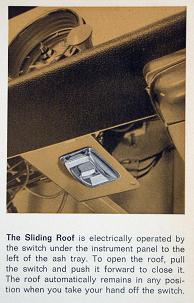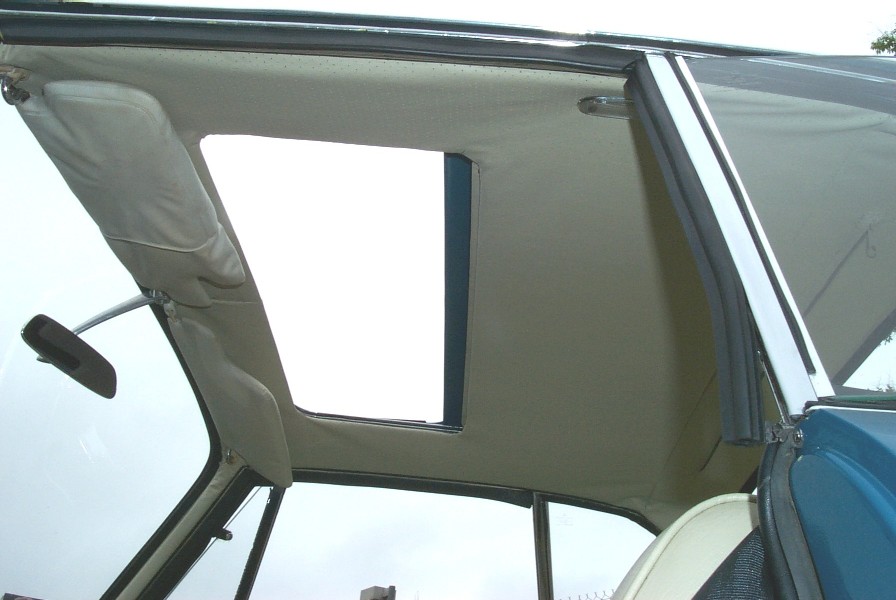
|
To open the sunroof on the other Type III models (without electric operations), a crank must be pulled down from within its
permanent location in the headliner, just behind the rear view mirror. Turning the crank (several thousand times) opens
the sunroof. However, the Type 34 sunroof is electrically operated, and the roof section is pulled open by an electric
motor, without the laborious manual cranking. The driver simply reaches under the dash to the right of the steering column
and touches a chrome paddle rocker switch (left). Pulling on the paddle (to the rear) opens the sunroof, and
pushing it (to the front) closes it. Although the Workshop Manual said the motor will shut down when closed, the driver
usually released the switch to avoid unnecessary strain on the electric motor.
In the case of malfunction, a special crank was provided to operate the sunroof manually. In the rear of the headliner,
running the width of the rear window, there is a tidy little zipper allowing access to the electric sunroof motor and
crank gear. A rubber cap is removed from the motor so the crank can be inserted and used. Look at the parts diagram
(bottom most photo) on the lower right side for the special T34 crank. If you thought the regular T34 parts were hard to
locate, try search for one of the T34-sunroof only parts! Since they were not physically part of the sunroof motor, but
just an added part for emergencies, they tended to get lost and misplaced over the years.
For those of you familiar with the sliding steel sunroof mechanism, the T34 type is very similar to the manual type. If
you turn the manual system around 180 degrees but leave the opening and roof where it is, then you'd have the T34 setup,
with the crank in the rear, hidden behind a cool zippered compartment. The original zippered headliners are really rare
to see on sunroof models, but when you see one, you'll know it is an original! Cross your fingers and say a prayer ...
they're out there!
|


